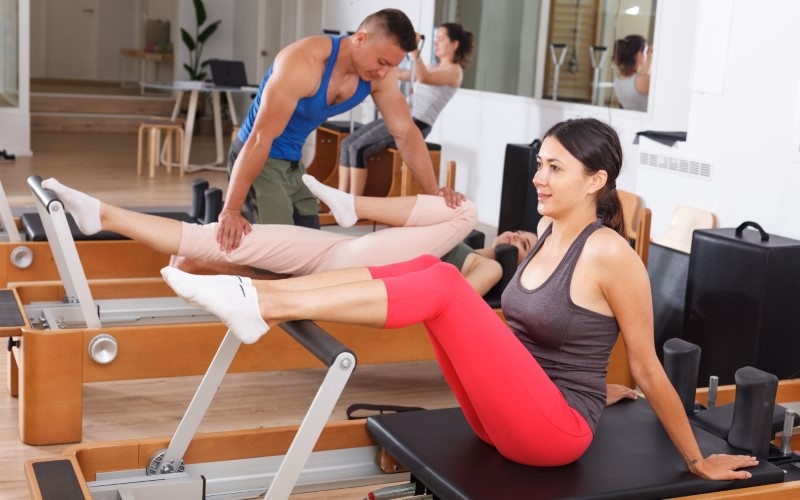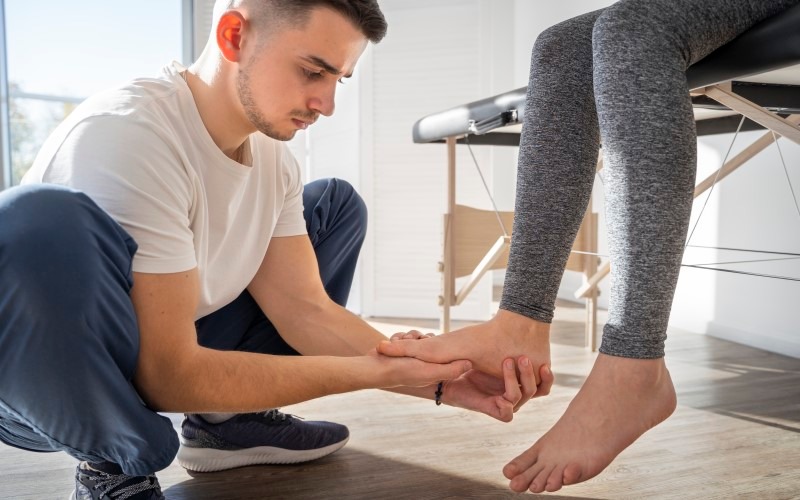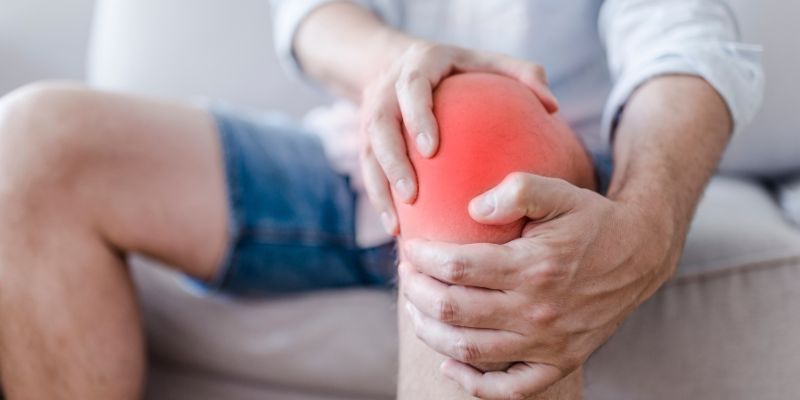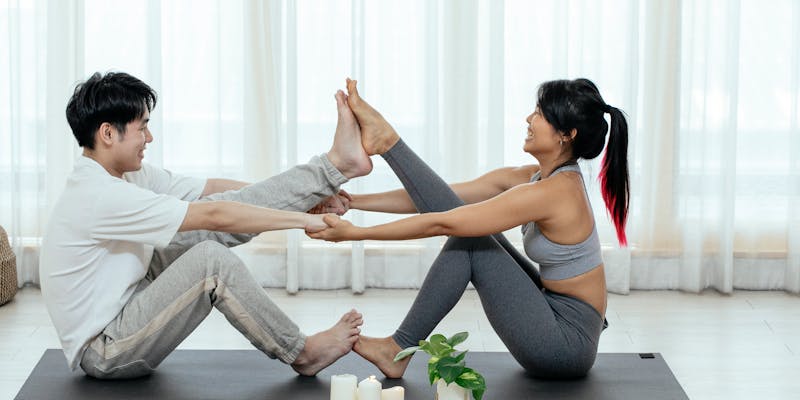Ankle Resilience: A Comprehensive Rehab Exercise Program for Sprains
Feb 14, 2024 By Nancy Miller
An ankle sprain can be a painful setback, but you can speed up your recovery with the right rehabilitation exercises. Let's delve into an effective ankle sprain rehab exercise program that can help you regain strength and flexibility.
Understanding Ankle Sprains
Before diving into the exercises, it's crucial to understand the nature of ankle sprains. They often occur when the ligaments supporting the ankle are stretched or torn. Common causes include sudden twists, falls, or awkward landings.
Initial Steps for Recovery
Rest: Immediately after an ankle sprain, giving your injured ankle the rest it needs is crucial. This means avoiding putting excessive weight on the affected foot. By allowing the injured ligaments to rest, you facilitate the initial stages of healing.
Ice: Using ice on a sprained ankle effectively reduces swelling and helps alleviate pain. Use an ice pack or wrap ice in a thin cloth and apply it to the affected area for 15-20 minutes every 2-3 hours during the first 48 hours. The cold helps constrict blood vessels, minimizing swelling and providing relief.
Compression: Using a compression bandage around the injured ankle serves a dual purpose. It helps control swelling by preventing fluid accumulation, and it supports the injured tissues. Be sure not to wrap the bandage too tightly, as it could impede blood circulation.
Elevation: Elevating the injured ankle is another effective way to reduce swelling. Whenever possible, keep the ankle elevated above the level of your heart. This stance promotes fluid drainage, reducing excess fluid buildup in the affected area.
These initial steps, collectively known as the "R.I.C.E." method (Rest, Ice, Compression, Elevation), form the foundation for the early stages of ankle sprain recovery. They are instrumental in managing pain and inflammation, setting the stage for the subsequent phases of rehabilitation.
Ankle Sprain Rehab Exercise Program
An ankle sprain rehab exercise program is a structured set of exercises aimed at aiding the recovery of an injured ankle. When someone experiences an ankle sprain, the ligaments supporting the ankle can get stretched or torn, resulting in pain, swelling, and limited mobility. The primary goal of a rehab exercise program is to promote healing, reduce swelling, and restore strength and flexibility to the affected ankle.
Components of Ankle Sprain Rehab Exercise Program
Rehabilitation for ankle sprains involves a well-rounded approach, encompassing various exercises to address mobility, strength, balance, and proprioception. Let's explore each component in detail.
1. Range of Motion Exercises
Alphabet Circles: While sitting or lying down, engage your toes in tracing the alphabet in the air. This seemingly simple exercise effectively enhances the ankle's mobility, promoting a broader range of motion.
Towel Stretch: In a seated position with legs stretched out, loop a towel around the ball of your foot. Pull the towel towards you to create a stretch, specifically targeting the ankle. This exercise helps in gradually improving flexibility.
2. Strengthening Exercises:
Calf Raises: Stand on a flat surface and lift your heels off the ground, holding the raised position for a few seconds before lowering them back down. This exercise is focused on strengthening the calf muscles, which play a crucial role in ankle support and movement.
Resistance Band Exercises: Incorporate a resistance band into your routine for ankle dorsiflexion (lifting the foot towards the shin) and eversion (turning the foot outward). This adds resistance, effectively building strength in the muscles surrounding the ankle.
3. Balance and Stability Exercises:
Single-Leg Balance: Stand on one leg for about 30 seconds, maintaining stability. This exercise challenges and improves your balance, a key aspect of recovering from an ankle sprain.
Bosu Ball Exercises: Perform various exercises on a Bosu ball to introduce an element of instability, thereby enhancing overall balance and stability. This includes activities that engage the ankle and surrounding muscles in a controlled yet challenging manner.
4. Proprioception Exercises
Heel-to-Toe Walk: Walk in a straight line, placing the heel of one foot directly in front of the toes of the other. This seemingly basic activity promotes proprioception, which is your body's awareness of its position in space. It contributes significantly to improved coordination.
Balance Board Exercises: Incorporate a balance board into your routine to further challenge proprioception. This involves controlled movements on an unstable surface, enhancing coordination and control over your ankle.

Gradual Progression in Ankle Sprain Rehab
Gradual progression is a fundamental principle in the rehabilitation process for ankle sprains. It involves systematically increasing the intensity and complexity of exercises over time to allow the injured ankle to heal and regain strength without causing further harm. This approach aims to balance challenging the ankle and preventing overexertion.
Starting with Low-Intensity Exercises
The initial phase of ankle sprain rehab focuses on gentle, low-impact exercises that promote blood circulation, reduce stiffness, and initiate healing. This may include a simple range of motion exercises and basic stretches. Starting with these foundational exercises helps prevent unnecessary stress on the injured ligaments.
Monitoring Pain Levels
Pay close attention to any pain or discomfort as you progress through the rehab program. It's essential to distinguish between the normal discomfort associated with rehabilitation and pain that may indicate overexertion or potential injury. If an exercise causes significant pain, modifying or skipping that particular activity may be necessary.
Gradual Increase in Intensity
Gradually introduce more challenging activities as the ankle strengthens and becomes more accustomed to the exercises. This may involve increasing the number of repetitions, resistance levels, or the duration of each exercise for strengthening exercises. Progressing at a manageable pace ensures that the ankle adapts without being overwhelmed.

Conclusion
Recovering from an ankle sprain takes time and dedication. Adhering to this ankle sprain rehabilitation exercise regimen can accelerate healing and mitigate the likelihood of future injuries. Remember to consult a healthcare professional before starting any exercise program, ensuring it suits your specific condition. Incorporate these exercises into your routine, and take steady steps towards a stronger and healthier ankle.

5 Unexpected Reasons for Regaining Weight—and Tips to Keep It Off for Good

What’s Behind Your Knee Pain and How Can You Find Relief?

Elevate Your Leg Day: Effective Hamstring Exercises You Might Be Missing

Coffee's Health Advantages - A Global Beverage Phenomenon

Understanding Skin pH and Its Importance

Does Sleeping More Improve the Look of Dark Circles?

6 Common Exercise Mistakes to Avoid With Your Partner


